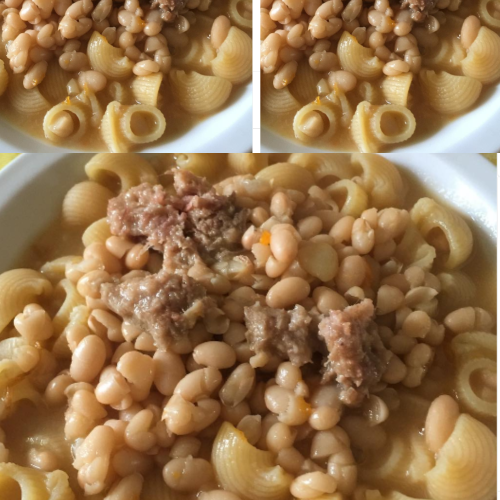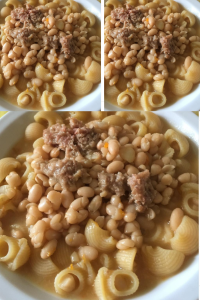Method:
Soak the Beans: Start by soaking your borlotti beans in plenty of water for about 8 hours, or overnight. This step is important for softening the beans and enhancing their flavor.
Cook the Beans: Drain the soaked beans and place them in a large pot with fresh water. Bring it to a boil, reduce the heat, and simmer gently for about 1 hour or until the beans are tender. Add a teaspoon of salt in the last 10 minutes of cooking.
Prepare the Base: In a separate skillet, heat the olive oil over medium heat. Add the chopped onion, carrot, and celery. Cook them until soft and translucent, about 5-7 minutes.
Add Pancetta and Tomato: Stir in the pancetta (optional for a richer flavor), then add the tomato puree. Let this simmer together for about 5 minutes to meld the flavors.
Combine with Beans: Once your beans are tender, add them (along with some of their cooking liquid) to the skillet with the vegetable mixture. Add more water or broth if needed to get your desired consistency.
Cook the Pasta: Stir in the pasta and cook until al dente, about 10 minutes. Add a sprig of rosemary for fragrance.
Serve: Season with salt, pepper, and a drizzle of extra virgin olive oil. Top with grated Parmigiano Reggiano for an extra touch of flavor.
Variations:
Vegetarian Version: Skip the pancetta for a lighter, vegetarian-friendly dish. You can add more vegetables like potatoes or spinach for added texture and flavor.
Different Beans: You can swap out borlotti beans for cannellini or kidney beans if that's what you have available.
Vegan Version: For a vegan version, omit the pancetta and cheese, and use vegetable broth instead of water for more depth.
Tips & Substitutions:
If you're short on time, use canned beans (2 cans, drained and rinsed) to speed up the process.
For a richer, creamier texture, blend a portion of the beans and broth before adding the pasta.
To make it gluten-free, use gluten-free pasta.

